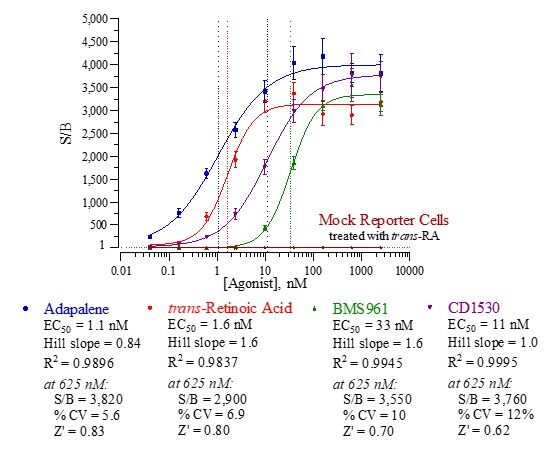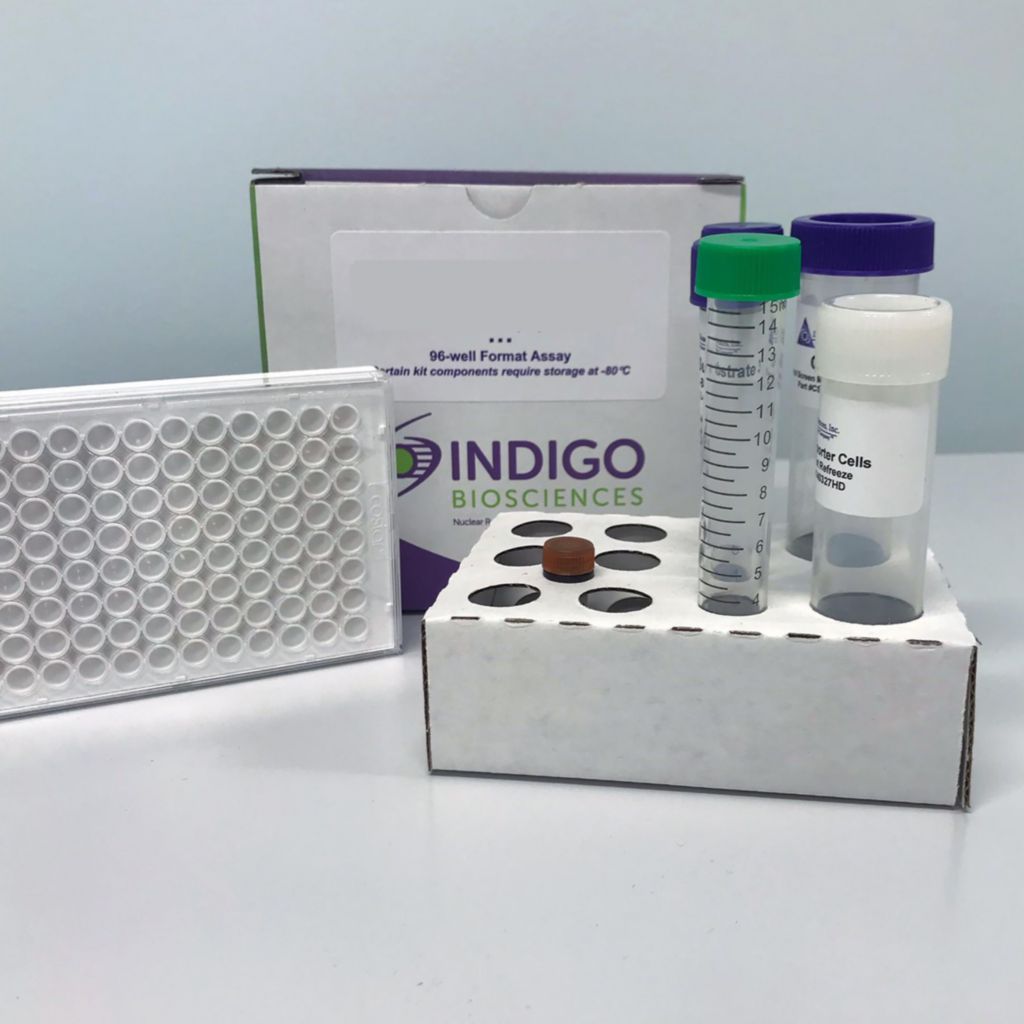Product Description and Product Data
This is an all-inclusive cell-based luciferase reporter assay kit targeting the Human Retinoic Acid Receptor Gamma (RARg). INDIGO’s RAR Gamma reporter assay utilizes proprietary mammalian cells that have been engineered to provide constitutive expression of the RAR Gamma. In addition to RAR Gamma Reporter Cells, this kit provides two optimized media for use during cell culture and in diluting the user’s test samples, a reference agonist, Luciferase Detection Reagent, and a cell culture-ready assay plate. The principal application of this assay is in the screening of test samples to quantify any functional activity, either agonist or antagonist, that they may exert against human RAR Gamma. This kit provides researchers with clear, reproducible results, exceptional cell viability post-thaw, and consistent results lot to lot. Kits must be stored at -80C. Do not store in liquid nitrogen. Note: reporter cells cannot be refrozen or maintained in extended culture.
Features
Ready to Use Upon Receipt
- Includes All Needed Components
- Contains Transfected Reporter Cells
- Eliminates Cell Licensing Fees
- Clear, Reproducible Results
- Consistent Results Lot to Lot
Product Specifications
| Target Type | Nuclear Hormone Receptor | ||
| Species | Human | ||
| Receptor Form | Hybrid | ||
| Assay Mode | Agonist, Antagonist | ||
| Kit Components |
| ||
| Shelf Life | 6 months | ||
| Orthologs Available | No | ||
| Shipping Requirements | Dry Ice | ||
| Storage temperature | -80C |
Data
Target Background
Retinoic acid receptors (RARs) are nuclear hormone receptors of the NRB1 class, which function as heterodimers with retinoid X receptors (RXRs). There are three distinct RAR subtypes; RARalpha, RARbeta and RARgamma. RARalpha is present in most tissue types, whereas RARbeta and RARgamma expression is more selective. RXR-RAR heterodimers act as ligand-dependent transcriptional regulators by binding to the specific retinoic acid response element (RARE) found in the promoter regions of target genes. In the absence of an RAR agonist, RXR-RAR recruits co-repressor proteins such as NCoR and associated factors such as histone deacetylase to maintain a condensed chromatin structure. RAR agonist binding stimulates co-repressor release and co-activator complexes, such as histone acetyltransferase, are recruited to activate transcription. RARs transduce retinoid signals in vivo, which mediates proper embryogenesis, differentiation and growth arrest. Specifically, RXRalpha-RARgamma heterodimers are necessary for growth arrest and viseral and primitive endodermal differentiation, whereas RXRalpha-RARalpha is required for cAMP-dependent parietal endodermal differentiation. In vitro it has been difficult to elucidate the roles of individual subtypes as functional RAR knockouts generate artificial redundancies that are thought not to exist under normal conditions.
The Human RARγ Reporter Assay Systems utilize proprietary mammalian cells engineered to provide constitutive, high-level expression of Human Retinoic Acid Receptor Gamma (NR1B3), a ligand-dependent transcription factor commonly referred to as RARγ. Additionally, these cells contain a RARγ-responsive luciferase reporter gene. Thus, quantifying luciferase activity provides a surrogate measure of RARg activity in the treated reporter cells.
Citations
Also available as a service

